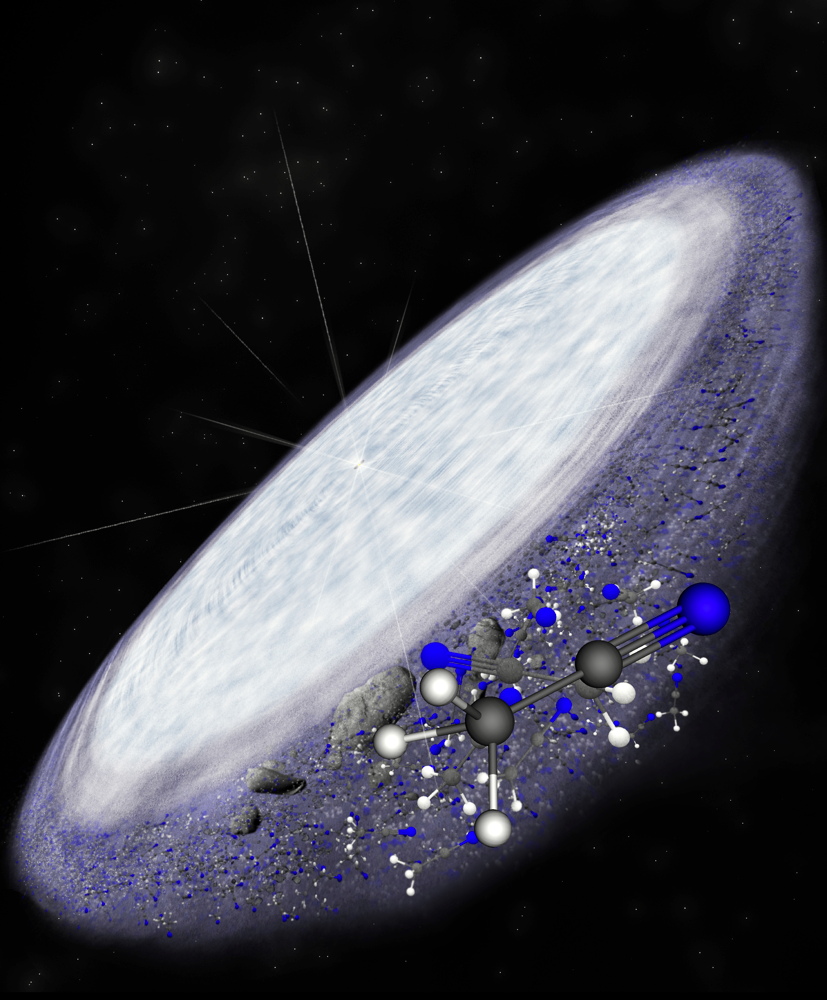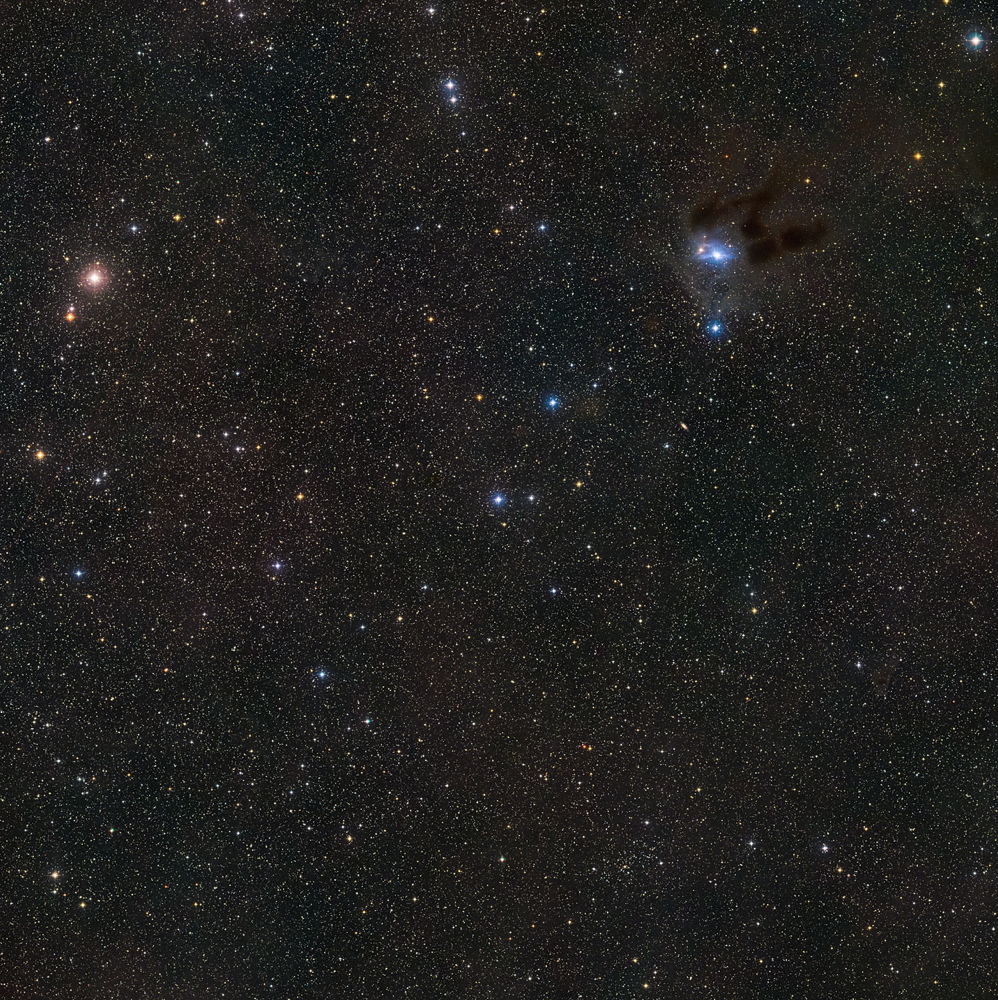Basic Ingredients for Life Found Around Distant Star
For the first time, astronomers have discovered complex organic molecules, the basic building blocks for life, in a disk of gas and dust surrounding an alien star.
To the researchers' surprise, the organics found around a young star called MWC 480 are not only surviving but thriving in quantities slightly higher than those thought to have existed in the early solar system. The prolific amount of material reveals that Earth's solar system is not the only one to contain these complex molecules, suggesting that the ingredients required for life to evolve may exist throughout the universe. The scientists created a video tour of the star MWC 48 to showcase their discovery

"The very rich organic chemistry present in the young solar system, as evidenced by cometary compositions, is far from unique," lead author Karin Öberg, of the Harvard-Smithsonian Center for Astrophysics in Massachusetts, told Space.com by email.
"It thus seems likely that the prebiotic chemistry that took place in the solar system, including Earth, is also happening elsewhere," she said. [Related: Signs of Alien Life Will Be Found by 2025, NASA's Chief Scientist Says]
Building blocks abound
Located in the Taurus star-forming region 455 light-years away from Earth, the star MWC 480 is about twice the mass of the sun and shines nearly 10 times brighter. A disk of material surrounds the million-year-old star, but scientists have not observed any obvious signs of planet formation.
Using the Atacama Large Millimeter/submillimeter Array (ALMA), Öberg and her colleagues observed MWC 480, finding enough methyl cyanide (a complex carbon-based molecule) in the disk surrounding the star to fill all of Earth's oceans. They also found a supply of other complex carbon-based molecules.
Volatile elements such as cyanides boil away at high temperatures. Despite this fragility, they are thought to be necessary for life. The carbon-nitrogen bonds of cyanides are especially important, as they are essential to the formation of amino acids, which in turn are the building blocks for proteins.
Get the Space.com Newsletter
Breaking space news, the latest updates on rocket launches, skywatching events and more!
While astronomers have found simple volatilesin disks around other stars, complex organic molecules such as those spotted by the team have remained more difficult to pin down in previously studied disks. These complex elements exist in interstellar clouds between stars, but scientists were unsure if the elements could survive the energetic formation of a young solar system, where radiation could break apart their bonds. But the material surrounding MWC 480 is awash in the building blocks of life.
Öberg and her team found cyanides throughout the disk, in locations ranging from 30 to 100 times the distance of Earth from the sun. Scaling the massive system down, the region is comparable to the solar system's Kuiper Belt, the region beyond Pluto where cold planetesimals and icy comets reside.
By studying asteroids and comets, Öberg and her team determined that the disk surrounding MWC 480 contains more organic cyanides than currently observed in the comets of Earth's solar system. The presence of these complex organics suggests that the building blocks for life may exist in planetary systems throughout the universe.
"What I find most exciting here is the general context in which this places the assembly of planetary systems," Geoffrey Blake, of the California Institute of Technology, told Space.com by email. Blake, who was not involved in the research, authored a News & Views article that appeared alongside the research.
"We know from the Kepler mission and other searches that planets are incredibly common," he said. "From studies such as this, we are learning that the pivotal chemical compounds needed to seed early worlds with the volatiles required for life are universal."
The research, along with Blake's article, appears online in the journal Nature.

Delivery: Earth
After planets in the early solar system evolved, they suffered constant bombardment from icy comets. These comets, leftovers from the birth of the solar system, are thought to have seeded Earth with water and other elements necessary for life to evolve. By studying the compositionof comets today, scientists can determine how plentiful complex organic molecules, such as methyl cyanide, were in the early solar system.
Because the cyanides around MWC 480 are located in a region analogous to the Kepler Belt, the same bombardmentmay occur for the planets that form around that star, or any other that hosts a similar disk. Since the early Earth contained far less carbon and nitrogenthan the planet does today, the process was highly important.
"The delivery of volatiles that contain these elements, and water, to the surface of the Earth is critical to life as we know it," Blake wrote. "Once on the surface, cyanides are likely very important to the origin of life."
Öberg's team relied on the extreme sensitivity of ALMAto detect the cyanides in gas form. The telescope is in fact an array of several individual 7- and 12-meter (23 to 39 inches) instruments whose positions can be shifted as needed.
"This huge improvement in sensitivity and imaging resolution is opening up entirely new frontiers in astronomy and exoplanetary science," Blake said. "We literally can image, with ALMA, the molecular gas in zones around young stars in which planetesimal formation is underway, in molecules we could never detect before."
ALMA, along with other imaging instruments, can be put to use searching for the elusive cyanides around other young stars, as well as the movement of ices, organics and rocks.
"We are exploring entirely new territory here," Blake said. "Until now, we had but one example to study the organic chemistry associated with the birth of planetary systems — our own solar system. Now, we will be able to examine protoplanetary disks around low-mass stars, high-mass stars, stars in clusters, stars by themselves, etc. Some chemical models have been run, but there is no substitute for measurements!"
Follow us @Spacedotcom, Facebook and Google+. Original article on Space.com.
Join our Space Forums to keep talking space on the latest missions, night sky and more! And if you have a news tip, correction or comment, let us know at: community@space.com.

Nola Taylor Tillman is a contributing writer for Space.com. She loves all things space and astronomy-related, and enjoys the opportunity to learn more. She has a Bachelor’s degree in English and Astrophysics from Agnes Scott college and served as an intern at Sky & Telescope magazine. In her free time, she homeschools her four children. Follow her on Twitter at @NolaTRedd









